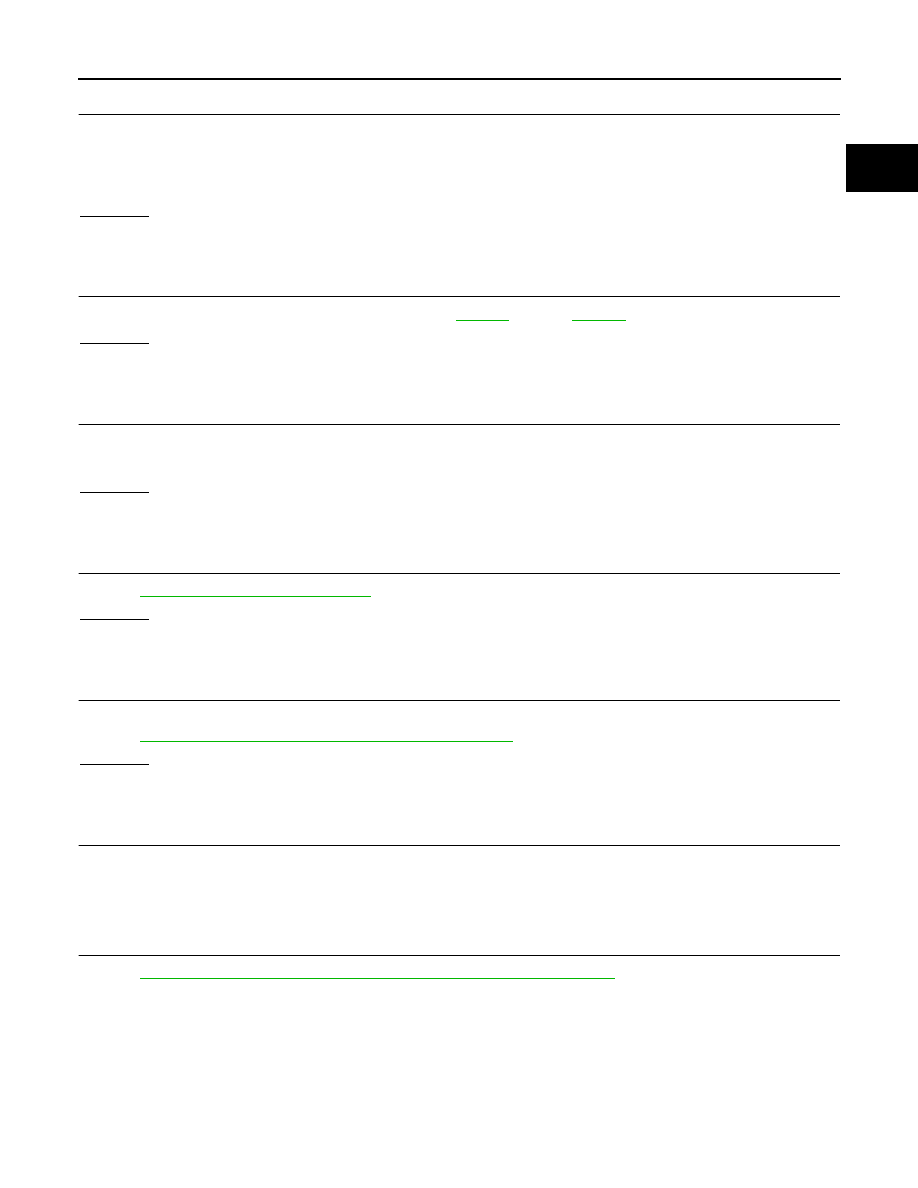Nissan Pathfinder (2005 year). Manual - part 184

DTC P0441 EVAP CONTROL SYSTEM
EC-323
C
D
E
F
G
H
I
J
K
L
M
A
EC
2005 Pathfinder
8.
CHECK EVAP CONTROL SYSTEM PRESSURE SENSOR CONNECTOR
1.
Disconnect EVAP control system pressure sensor harness connector.
2.
Check connectors for water.
OK or NG
OK
>> GO TO 9.
NG
>> Replace EVAP control system pressure sensor.
9.
CHECK EVAP CONTROL SYSTEM PRESSURE SENSOR FUNCTION
Refer to DTC Confirmation Procedure for DTC P0452
, P0453
.
OK or NG
OK
>> GO TO 10.
NG
>> Replace EVAP control system pressure sensor.
10.
CHECK RUBBER TUBE FOR CLOGGING
1.
Disconnect rubber tube connected to EVAP canister vent control valve.
2.
Check the rubber tube for clogging.
OK or NG
OK
>> GO TO 11.
NG
>> Clean the rubber tube using an air blower.
11.
CHECK EVAP CANISTER VENT CONTROL VALVE
Refer to
EC-344, "Component Inspection"
.
OK or NG
OK
>> GO TO 12.
NG
>> Replace EVAP canister vent control valve.
12.
CHECK EVAP PURGE LINE
Inspect EVAP purge line (pipe and rubber tube). Check for evidence of leaks.
Refer to
EC-34, "EVAPORATIVE EMISSION LINE DRAWING"
.
OK or NG
OK
>> GO TO 13.
NG
>> Replace it.
13.
CLEAN EVAP PURGE LINE
Clean EVAP purge line (pipe and rubber tube) using air blower.
>> GO TO 14.
14.
CHECK INTERMITTENT INCIDENT
Refer to
EC-158, "TROUBLE DIAGNOSIS FOR INTERMITTENT INCIDENT"
.
>> INSPECTION END
Water should not exist.